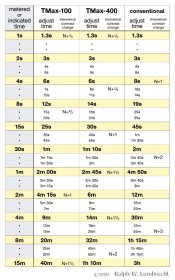Well, I've shot and developed a few more shots with my pinhole camera, and i'm suprised at the sharpness of the negs. While it's obviously not up to par with my Canon L lenses, I am suprised at the sharpness and detail.
I do have one dumb question (well, one more dumb question

).
I did some contact prints on Arista edu glossy and Slavic double weight FB paper, and noticed what I first thought was the dreaded newton rings. but before I went out and bought some anti newton ring glass, I decided to look at my negs. I noticed they had the little bands in the sky areas just like my contact prints did. They're not perfectly circular; they look more like really thing faint tree rings or the ridges of a fingerprint. Unfortunatly, they dont show up in the scan of the prints. I'm assuming that's a development problem, but could the pinhole cause that kind of problem?
The pictures are shot outside on an overcast day, so there's no direct sun. The 5x7 negs are HP5+ developed for 10 minutes in Rodinal 1:50 @ 20C in a 6x9 flat-bottom tray I found at Target. I did an intermittent agitation scheme like I do my 3mm negs: Agitation for first 30 seconds, then 10 seconds every minute. I also picked the negs up out of the developer and let the developer drip off the corner at the end of every agitation. The total time for agitation and picking the negs out of the developer and putting them back in took like 20 seconds.
If it's development related, could someone tell me a better tray developing method or give me a link? I'm really not finding much, but perhaps i'm just overlooking something very obvious.
BTW, the rings show up more in the glossy Arista paper than the matte Slavic paper


 It's waaaay underesposed. It's my first try, though, so I'm not too disapointed.
It's waaaay underesposed. It's my first try, though, so I'm not too disapointed.


